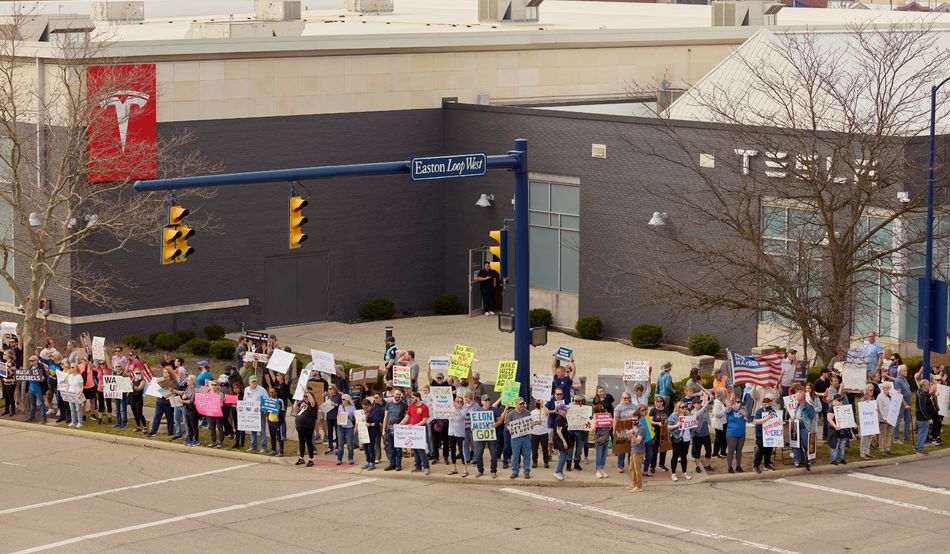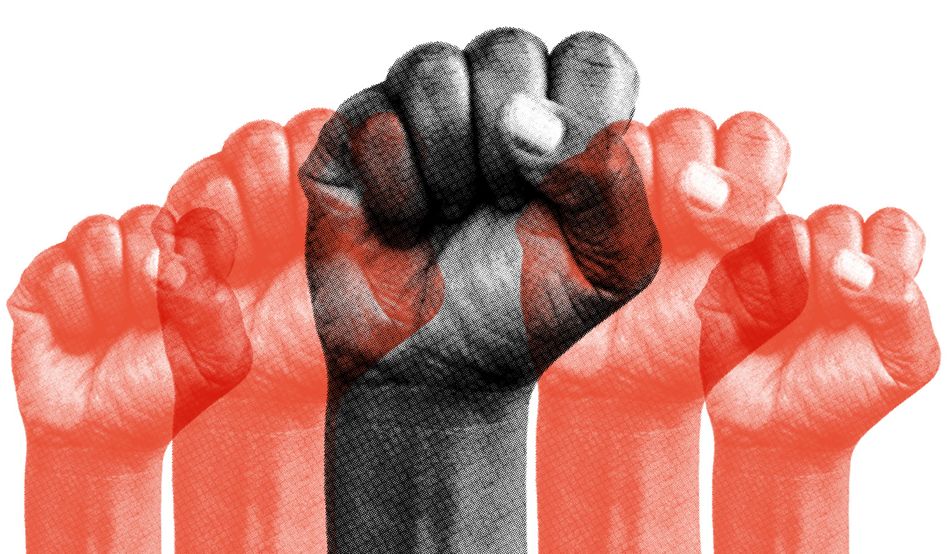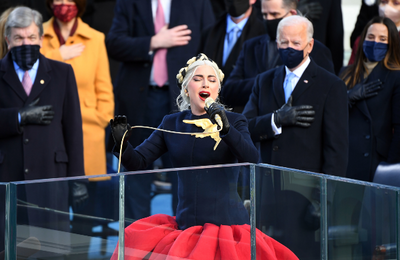In March 2024, I wrote a piece for Prospect exploring what pro-democracy activists feared might happen if Donald Trump returned to office as president of the United States. They set out the various moves against which they were preparing to resist, from the probable purging of civil servants to the likely disinterring of wartime powers from 1798. How, then, are things unfolding now that Trump is back?
The US has rarely been shy of trumpeting its love for liberty. Yet the nation’s response to politicised mass firings, deportations without due process and much else has seemed curiously quiet. In the view of long-time Washington Post columnist Jennifer Rubin, the reaction from big law firms, universities, media outlets and corporations has been “absolute cowardice”—something that is driven, she tells me, by “avarice”. Instead of using wealth as insulation from political pressure, they have been “less willing to tolerate risk than many of us imagined”, apparently because their “fear of losing what they have is so great”. This, she argues, has provoked them to do what the historian of authoritarian regimes Timothy Snyder terms “obeying in advance”. (Since we spoke, Harvard has refused to comply with sweeping Trump administration demands and other universities have launched a “mutual defense compact”.)
Likewise, faced with defeat in the popular vote and an administration far more ruthlessly organised than last time, most US Democrats seem stunned. Ordinary party members have been venting their frustration, particularly at the apparent inability of the Democratic National Committee and Senate minority leader Chuck Schumer to realise what has hit them. Growing numbers of congressional Democrats have, however, been vocal in their opposition, from those protesting outside one of Elon Musk’s first targets, the aid agency USAID, to Al Green heckling Trump’s address to Congress, and Alexandria Ocasio-Cortez joining Bernie Sanders’s “Fighting Oligarchy” tour. That has been pulling in big crowds, even in Trump-supporting states like Arizona—Ocasio-Cortez claimed, for instance, that on 22nd March they expected 3,000 people in Tucson, “and 23,000 showed up”. Democratic governors have pushed back too: Pennsylvania’s Josh Shapiro sued Trump over attempts to freeze funds; JB Pritzker of Illinois has called for “mass protests” and “disruption”. By April, they were even scoring some limited wins, such as Cory Booker’s record-breaking 25-hour Senate speech of symbolic protest, and the victory of a liberal, Susan Crawford, in the high-profile race for the Wisconsin state supreme court.
Nonetheless, these efforts have all felt rather uncoordinated. It doesn’t help the Democrats that losing a presidential race tends to leave US parties lacking leadership. But at the grassroots, frustration has been generating a surge of activism—much more so than has been immediately apparent from media coverage. Academics at the Crowd Counting Consortium, a project of the Harvard Kennedy School and the University of Connecticut, argue that the memory of a few huge protests in 2017, such as the Women’s March, is misleading people into thinking the response now is weaker. They report that there were 2,085 street protests this February, as against 937 in February 2017, though it is not clear how the size of the protests compare. This year’s protests were also followed by co-ordinated days of action. One reason all this is less visible, it appears, is that this time, they have been more dispersed.
In the days after Trump’s second inauguration, a major new protest group sprang up in response to a Reddit post suggesting people demonstrate at state capitols across all 50 states against what it cast as the authoritarianism of the new administration. On 5th February, this actually happened, under the moniker “50501”—50 states, 50 protests, one day. As Hunter Dunn, 50501’s national press coordinator, tells me, so many people came out that “one day” became “one movement”. He emphasises 50501’s highly decentralised, non-hierarchical structure and non-violent tactics, intended to enact its opposition to violent authoritarianism. “If you’re pro-democracy, if you’re pro the constitution, and you’re against executive overreach and if you’re peaceful,” he says, “you’re 50501 if you say that you are.” Protest, he suggests, has changed in the wake of the Black Lives Matter and Gaza demonstrations, and the authorities’ response. People now take operational security more seriously, leaving their phones at home.
50501 is not the only spontaneous grassroots reaction against the new administration. In late February, when lawmakers went home for Congressional recess, voters at town hall meetings in Republican districts from Georgia to Wisconsin began to voice their anger at the sweeping power granted to Musk and his “Department of Government Efficiency” (Doge) to impose swingeing cuts. In Missouri, representative Mark Alford, challenged by fired federal workers, sought in vain to reassure them by telling them that God has a plan. In Texas, representative Keith Self tried to talk about Doge but was met with a barrage of heckles and boos. But they did at least stay and listen. In Kansas, senator Roger Marshall was asked about Doge firing veterans—and left.
At one town hall meeting, two protesters were tasered
In response, House Speaker Mike Johnson led Republicans in baselessly alleging that these were not real voters but paid stooges—paid, according to Johnson, by Jewish philanthropist George Soros. Presumably this included Teresa Borrenpohl, the woman detained and dragged out of a town hall in Coeur d’Alene, Idaho by employees of a security firm who refused to identify themselves. Republican congressional leaders were advising members not to hold town halls, so protesters started convening meetings with empty seats, mocking their representatives’ reluctance to meet their constituents. At one that went ahead, hosted by Marjorie Taylor Greene, two protesters were tasered. Meanwhile, Minnesota governor and defeated vice-presidential candidate Tim Walz began hosting town halls in Republican districts.
Many in the emerging protest movement are drawn to a strategy popularised by the Harvard political scientist Erica Chenoweth, co-author of Why Civil Resistance Works and a member of the Crowd Counting Consortium. Chenoweth contends that if 3.5 per cent of a country’s population are actively, peacefully opposing its government, this will begin to force concessions. One of those influenced by their thinking is Joan Donovan, a social scientist at Boston University, who studies networked social movements that use technology to coordinate protest. She tells me she was “bothered” by the fact that “the richest man in the world [was] rooting around in personal government databases” without congressional oversight. This has led to her playing a key role in kick-starting the most high-profile protests so far: Tesla Takedown.
After Musk’s Nazi-esque salute on inauguration day, Donovan noticed stories about people vandalising Tesla’s cars, and read about a couple protesting at a Tesla charging station in Maine. The moment seemed “ripe for people to protest against what Musk really represents”, she explains: that is, “this new technological oligarchy”. On Bluesky—the Twitter alternative that has become a hive of anti-Trump messaging—she posted: “Take a few friends to a Tesla dealership and picket on the sidewalk. All social change starts small and snowballs over time.” On the first day doing this in Boston, she had no idea if people would show up, but when she arrived, “there were about 50 people already there”, and since then attendance numbers have mutiplied, she says. Part of the aim is to persuade people to sell their Tesla stock and cars; Donovan has “been contacted by people who are selling their Teslas, and are happy with what the movement has done, and what it made them think about”.
The actor and film director Alex Winter sought her blessing to start boosting the campaign to his 170,000-plus Bluesky followers, and it has since blossomed across the US and beyond. In California, Vickie Hinkley, a retired banker and farmer living in Santa Cruz, decided to join the Tesla protests in Palo Alto—once the company’s home. Hinkley grew up in the city in the 1950s and 60s, before it was absorbed into Silicon Valley, and is motivated not only by the depredations of Musk’s chainsaw—her protest sign reads “Elon is the Government Fraud”—but by the colonisation of her old home town by “greedy, totalitarian bastards”. She is also beginning to worry about Doge endangering her social security payments, on which she depends. Like Donovan, Hinkley has found herself in conversation with apologetic Tesla owners.
As in Boston, the Palo Alto protests are peaceful, Hinkley says, and are led more by boomers than students, with little police presence. But there have been occasional confrontations: protesters occupied the Tesla showroom in Manhattan; in Chicago, a heavy-duty police line appeared outside another; there have also been several arrests for violent attacks on Tesla cars, charging points and showrooms. Donovan rejects this approach, arguing that non-violence is crucial not just morally and legally, but because destruction is counter-productive, whereas creating a public spectacle that has positive impact works.
The protests and the subsequent slump in Tesla’s share price seem to have rattled Musk. (With profits down 71 per cent, he now plans to spend far less time with Doge.) Trump’s attorney general, Pam Bondi, has promised severe criminal penalties: “If you’re going to touch a Tesla, go to a dealership, do anything, you better watch out, because we’re coming after you.” Hinkley tells me Bondi’s threats will not deter her from peaceful protest: “It really makes you a little more stubborn.”
While much of the media response to what Trump’s opponents cast as lawlessness has been timid, flickers of the startup-style energy of 50501 and Tesla Takedown are visible. A week ahead of Trump’s inauguration, Jennifer Rubin, that journalist who is so critical of corporate media’s cowardice, resigned from the Jeff Bezos-owned Washington Post, on the grounds, she tells me, that the “ingredients necessary for a distinguished paper—namely, courage and aggression—were no longer possible”. In response to what she decries as “the general failure of corporate- and billionaire-owned media, which has too often capitulated to Trump, too often bended the knee,” she has set up shop on Substack. Her new outlet, the Contrarian, pulled in more than 10,000 paying subscribers within 12 hours (and more than 275,000 free subscribers within a week) for its frenetic output of newsletters, articles and huge community Zoom meetings.
Rubin has occupied various points on the political spectrum, and insists her project is not partisan, or even specifically anti-Trump, but “pro-democracy”; like Donovan, she stresses that the authoritarian threat is not a function of Trump alone. She criticises democracies in general for failing to provide the kind of “well-dispersed prosperity” that is needed to shore up support for democratic politics. America’s crisis, she argues, is at least forcing people, for “the first time in a generation”, to make “a very forceful case for pluralistic democracy”.
But the arena where resistance has had by far its greatest effect is the courts. When I spoke to him last year, Michael Sozan of the Center for American Progress told me that “networks of lawyers” were coming together, preparing to “hit back” in defence of the rule of law. Today, having watched this taking shape “behind the scenes” before the election, he considers that the pushback against the administration’s actions has gone well, with lawyers ready to respond across a wide front; a range of groups, able to draw on significant legal expertise, have “sprung into action”.
The leading figure is Norman Eisen, a boisterous lawyer and former diplomat. In his recent speech at the justice department, Trump repeatedly attacked Eisen by name. He is leading State Democracy Defenders Fund (SDDF), a new organisation set up, as its executive director Susan Corke told me, to be a “nimble” addition to the ecosystem of pro-democracy groups. It “assembled a very large network of pro and ‘low’ bono lawyers”, ready to match Musk’s Doge minions in working through the night if necessary, aiming not just to find the best legal arguments, but also to be “the tip of the spear”—to be the first to file suit, and the first to make the news. Its strategy is to choose cases that involve real harm to individuals, and so to build a clear story about executive overreach. The underlying aim is to push back not only against that overreach itself, Corke says, but against the sense of hopelessness it engenders.
Eisen is audibly proud of the fact that his group filed its first suit 60 seconds after Trump returned to power, and declares the president’s attacks on him a “badge of honor”. Not coincidentally, he is also the co-founder and publisher of Rubin’s Contrarian. Its subscriptions are channelled partly into the legal battles; Eisen then uses its newsletters to herald its own and its allies’ victories, however temporary, against the firing of government agency staff, the scrapping of DEI policies, and so on. SDDF’s inauguration-day lawsuit sought to ensure that Doge obeyed the law; the team followed up by obtaining an interim order to stop Musk’s team accessing Treasury data. Given Doge’s arguably unconstitutional foundations and its breakneck pace of working, it seems particularly vulnerable to legal challenge. SDDF managed to stall Doge’s dismantling of the aid agency USAID, for a time—though the agency has now been closed.
Last year Michael Sozan told me he was “incredibly concerned” at the idea of an “authoritarian president” giving law enforcement agencies “the ability to indiscriminately ask people for their papers, and if they don’t have them… [to] deport them almost on the spot, without due process.” Likewise, when I spoke to Aziz Huq, a legal scholar at the University of Chicago, he pointed out that there was talk in Trump circles of invoking the 1798 Alien Enemies Act to deport gang members without due process, on the grounds that they are an invading force with which the US is effectively at war. This is what has happened. And perhaps even more so than with Doge, the creative invocation of a 227-year-old wartime law has become the focus of furious legal combat.
On 15th March, under an executive order signed by Trump, the administration set about flying alleged members of a Venezuela-linked gang to a “terrorism confinement centre” in El Salvador, without a hearing. In response to a suit already filed by Democracy Forward and the American Civil Liberties Union, a federal judge, James E Boasberg, ordered that the two planes turn around in mid-air, and that a third awaiting takeoff stay put. The administration ignored this, broadly on the grounds that the written version of the order did not specifically instruct the planes to turn round. When the unimpressed judge requested more details, the justice department refused on grounds of national security, argued that Boasberg had no authority over Trump’s executive order, and asked an appeals court to remove him from the case. The president called him a “Radical Left Lunatic” and demanded he be impeached. In a highly unusual public intervention, the chief justice of the Supreme Court declared this inappropriate. It has since emerged that at least two deportees are not gang members; the administration claims that now they are on foreign soil it cannot bring them back.
SDDF’s Susan Corke says that, in anticipation of the act being invoked, her team and former attorneys general worked with governors so they were collectively ready to submit an amicus brief—a legal document offering advice or information written by people not directly involved in a case. The brief argued that such use of the act was a “dangerous overreach of executive power”. She worries that the case “sets the precedent for anybody potentially who disagrees with the president” to be “snatch[ed] up on the street”. Since we spoke, Trump has been mooting similar treatment for US citizens convicted of serious crimes. It is not immediately clear how possible it will be to push back at this. Surveying the range of the administration’s actions to date, Aziz Huq says he is surprised “how quickly we’ve moved into a world in which federal courts seem to be openly defied”. He points to the deportation of a doctor based at Brown University from Boston’s Logan Airport, regardless of a court order blocking it.
The other aspect of the new government’s strategy, Huq suggests, is “to push as many cases as possible to the Supreme Court, where the administration expects more favourable audience than they expect to win in trial courts”. This does seem to be working: the court has made a series of rulings in the administration’s favour, albeit sometimes tentatively, on narrowly technical grounds. In early April, in the Alien Enemies Act case it rejected the temporary restraining order on deportations but it did insist the government allow future deportees a court hearing, and on 19th April ordered a pause in plans to use the act to expel alleged Venezuelan gang members being held in Texas. It has also ruled unanimously that the administration must “facilitate” the return of Kilmar Abrego Garcia, who was removed to El Salvador by mistake. At the time of writing, the administration is insisting it has no power to do so.
Is seeking to stymie the administration in the courts really so democratic? Tianna Mays, legal director of State Democracy Defenders Action (a partner of SDDF), argues that the slash-and-burn approach to eliminating “fraud, waste and abuse” not only breaks the law, but was “not the promise [Trump] ran on”; nor, she says, is the administration’s targeting of lawyers. In his push to deport illegal migrants, including via the Alien Enemies Act, however, Trump is doing what he promised during his campaign. Hunter Dunn of 50501 counters that it is perfectly possible for a democratically elected government to turn authoritarian, and that it is legitimate to resist this. Polling suggests that, so far at least, reaction against the administration is being driven more by Trump’s tariffs and other economic policies than deportations and removals to foreign jails.
Some fear the administration will seize on violent protest as a justification to institute martial law
And what happens if the state or impassioned Trump supporters respond as aggressively to protest by citizens as they have to protest by those on green cards and student visas? Trump’s attacks on Norman Eisen have led the lawyer to increase his personal security arrangements; several of those I spoke to worry about the implications of threats of violence against judges. There have reportedly been isolated acts of violence against Tesla Takedown protesters. One of the most striking concerns I heard last year related to the possible invocation of the 1807 Insurrection Act, to allow for the emergency use of the military to quell violent dissent on US soil. Trump has declared an emergency on the southern border but for now cabinet officials have advised against invoking the act, even in that context. Nonetheless, some fear the administration is ready to seize on signs of violent protest as a justification to institute martial law. Sozan even suggests that might be used to cancel elections. He notes that Trump has already declared emergencies not only at the border but over energy, and that “by and large there’s been no pushback”.
Perhaps, though, these are just worst case scenarios. On the first Saturday in April, 50501, Indivisible and other groups organised an array of protests across the US in which 50501 claims more than five million Americans participated, with unexpectedly big turnouts even in red states like Iowa, Florida, Wyoming and the Dakotas. These seem to have provoked very little in the way of aggressive counter-protest or draconian policing. To the extent that there was a hostile response, it lay more in a tendency to under-report the protests’ scope. Hunter Dunn spoke at the rally in downtown Los Angeles, and tells me that he couldn’t see the end of the crowd. He heard that at one point, the recently freed Enrique Tarrio, a leading figure in the far-right Proud Boys, showed up, but “nothing happened”. For the moment, the demonstrations appear to have revealed Musk’s decreasing influence. They took place three days after Musk’s favoured candidate stood in the Wisconsin state supreme court election, during which Musk handed out million dollar cheques to voters—to no avail.
Nevertheless, Dunn thinks the administration “will certainly crack down on our protests somewhere”; the best way to prepare, he thinks, is to mobilise as many people as possible. Likewise, Donovan thinks the threat is “very serious”. She had spent the day before we spoke preparing her elderly mother “for the event that I’m arrested or disappear”.
Even if a dramatic crackdown never comes, how sustainable is the effort to slow the Trump agenda? The huge turnout on 5th April suggests Donovan’s snowball effect is happening, though if more than five million people took part, that is still less than half of Chenoweth’s crucial 3.5 per cent. Another wave of demonstrations two weeks later—while admittedly less focused on street protest—saw a lower turnout. Further protests are planned, but it is too early to predict whether all this will have the transformative effect for which those I spoke to hope. Much depends on the November 2026 mid-terms, assuming they are free and fair. State Democracy Defenders’ Tianna Mays says she’s “holding on for the next 18 months”, on the basis that “we can keep pushing in the courts and we can hold that, but… the people have to take this back, and we’re seeing that momentum begin.” But if the economy lifts, and Musk continues to retreat, support for Trump may flourish once again. And Mays worries that if the administration manages to intimidate people, resistance will be insufficient. When I ask her what she fears most, she replies: “The silence”.

















